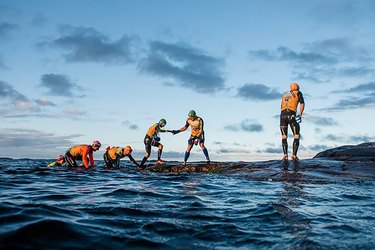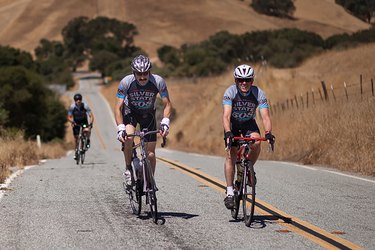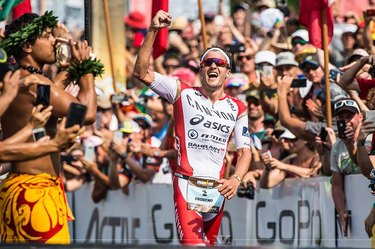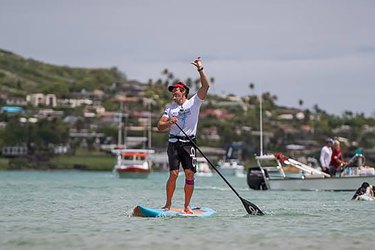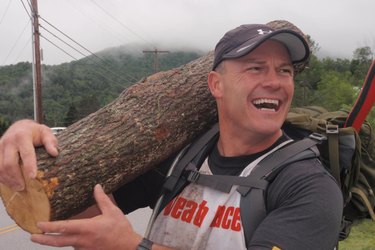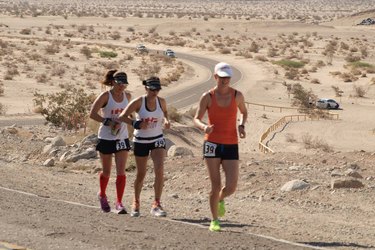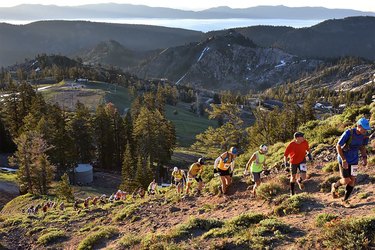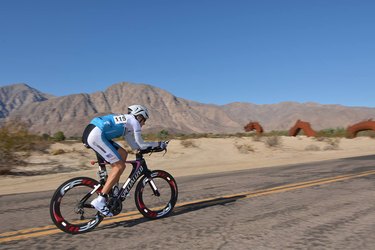Think you're tough enough for any of these 10 tests of strength and endurance? If so, pick your poison. These events can be completed in as little as four hours — if you're a highly skilled, fearless paddleboarder — or require 12 days of near-continuous cycling.
In between lies every grueling, twisted challenge imaginable to push the human body to its mental, physical and emotional limits. These challenges require a major commitment to training — and in most cases, a thick wallet to enter. Oh, and with a willingness to attempt things most people could never imagine.
Video of the Day
Video of the Day
1. GORUCK Selection
The all-night GORUCK Challenge, where athletes lug brick-stuffed ruck sacks and travel through urban areas while taking orders from a Special Operations veteran, is enough of a test for most. If not, there's GORUCK Selection, recommended for those training for the Special Forces Qualification Course, BUD/S and Ranger School, as well as those looking for a taste of what that's like.
While the stated hope is that everyone finishes, Selection is based on Special Operations schools that have a 10-percent pass rate. Figure on at least 48 hours of heavy bags, 80+ miles and dealing with every frigid body of water that comes along. Embrace the suck, as GORUCK encourages, and you might make it through.
Learn more: Find out more about GORUCK Selection
2. Silver State 508
It may or may not live up to its slogan as "the toughest 48 hours in sport," but it's almost certainly the most challenging 48 hours in cycling. Founded by John Marino in 1983, the 508-mile bicycle race has earned an international reputation for its grueling mountain climbs, desert terrain and desolate roads.
Athletes can compete solo or in relays but no drafting or pack riding is allowed. Held in early October, the Silver State 508 begins just north of Los Angeles and goes across the Mojave Desert, through Death Valley National Park and Mojave National Preserve, and finishes at Joshua Tree National Park. Along the way, cyclists climb ten mountain passes and ascend more than 35,000 feet.
Learn more: Find out more about Furnace Creek 508
3. Ironman World Championship
There are longer triathlons, but the Ironman World Championship in Kona, HI, remains the original and toughest at the signature distance of a 2.4-mile swim, 112-mile bike and 26.2-mile run. Just getting to Kona is a challenge, as athletes must either qualify for the event or win a slot via lottery.
From there, it's a battle with 40-mph crosswinds while biking through the black lava rock landscape and contending with the 95-degree October heat that turns the run into a death march. Nowhere do athletes labor harder to reach the finish and hear, "YOU are an IRONMAN!"
Learn more: Find out more about Ironman Kona
4. Molakai2Oahu Paddleboard Race
Since its inception in 1997, Molakai2Oahu has grown with the sport of stand-up paddleboarding. Still, there are only a few hundred SUP enthusiasts bold enough to attempt the choppy 32-mile journey across the 2,300-foot deep Ka'iwi Channel that connects the islands of Molokai and Oahu.
The wind and huge swells humble some of the world's most experienced paddlers. Competitors, who must prove they can paddle at least 5 mph, can race on either a traditional paddleboard or a stand-up version as a solo paddler or as part of a relay team. Winners finish in just over four hours, but others give up and board their mandatory escort boat.
5. OTILLO Swimrun World Championship
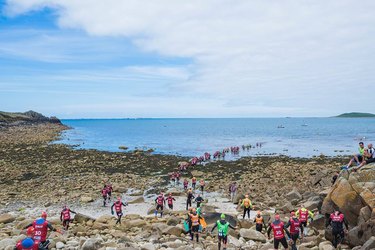
Sure, there are tougher swims and tougher runs. But no other race combines them like the OTILLO Swimrun World Championship. Held every year on the archipelago of Stockholm, Sweden, the race covers 26 islands (which means 52 transitions) and lasts from dawn 'til dusk.
The total distance is 75 km, 10 of which are open-water swimming, and the other 65 are trail running. But not just anyone can compete. According to their site, "To gain entry to OTILLO, you must either go through our Qualifiers, have great merits or just be lucky." Right. "Lucky."
6. The Ultimate Suck
After winning the Spartan Death Race in 2010 and 2011, Joe Decker created The Suck, which he bills as "Conan the Barbarian meets Full Metal Jacket with a dash of Deliverance." The Ultimate Suck lasts 48 hours and is held at a farm in Illinois belonging to Decker's family.
Challenges combine farm chores with military boot camp, trail running and survival skills. Knowing how to fire a shotgun, bale hay and dig holes is recommended and required gear includes an ax, headlamp, ruck sack, two sandbags (50 pounds for guys, 30 for gals) and an old car tire. If it all sounds like it sucks, that's the point.
Learn more: Find out more about The Ultimate Suck
7. Badwater Ultramarathon
The most notorious ultramarathon, Badwater takes runners on a punishing 135-mile course through California from Death Valley (280 feet below sea level where temperatures soar to 130 degrees Fahrenheit) to Mt. Whitney (8,300 feet above sea level).
Covering three mountain ranges for a total of 13,000 cumulative feet of vertical ascent and 4,700 feet of descent, Badwater attracts some of the world's most accomplished endurance athletes. There's no guarantee of entry, however. Runners submit an application in February to become one of the 95 or so chosen to tackle the mid-July event, which has a course record of 22 hours and 51 minutes, an average finish time around 38 hours and a 48-hour cutoff.
Learn more: Find out more about Badwater Ultramarathon
8. Grand Slam of Ultrarunning
Any one of the four trail runs in the grand slam could stand alone on this list. Collectively, the four 100-mile events — the Western States 100 Mile Run (California), Vermont 100 Mile Run, Leadville Trail 100 Mile Run (Colorado) and Wasatch Front 100 Mile Run (Utah) — represent an imposing challenge. To achieve the slam, runners must complete the four races in one calendar year.
Actually, in a 12-week span, since all four fall between late June and early September. Athletes get to see some of the country's most beautiful landscapes, albeit while enduring steep, rugged terrain and exhaustion. About a dozen runners complete the slam each year, taking an average of 100 hours to complete the four runs.
9. Race Across America
In the 27-year history of this June bicycle race from Oceanside, Calif., to Annapolis, Md., fewer than 200 solo and tandem racers have officially finished the course. That's a more exclusive club than the 2,000-plus folks who have scaled Mt. Everest or the hundreds of cyclists who compete annually in the Tour de France.
To finish within the 12-day time limit, RAAM racers can't sleep more than four hours a day — some average as little as 90 minutes — while consuming 8,000 calories. Entry fees range from $2,895 (solo) to $14,995 for an eight-person relay team, not including the mandatory support crew and vehicles racers must provide.
Learn more: Find out more about Race Across America
10. Spartan Ultra Beast

In the hierarchy of Spartan Races, Ultra Beast is the highest form of insanity. Or as the website so eloquently states, "The Ultra Beast is an exorcism." It covers more than 26 miles and 60+ obstacles, as you must complete the Beast course twice.
Prior to the race, you won't find any course or obstacle details; you just get to be surprised. Not for the faint of heart (or those who spend "more than one hour per year at Bed, Bath and Beyond"), you should probably only register for this race if you're a serious masochist (and have really invested in your training).
Learn more: Find out more about Spartan Ultra Beast
